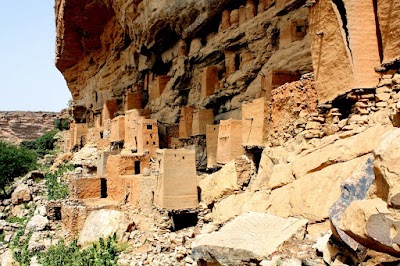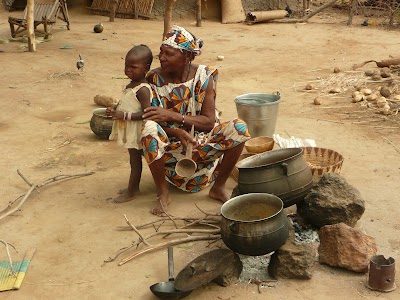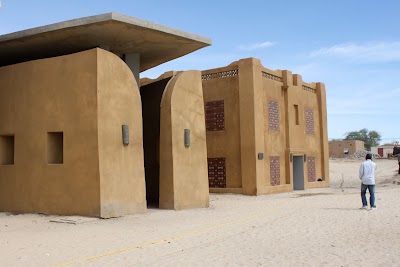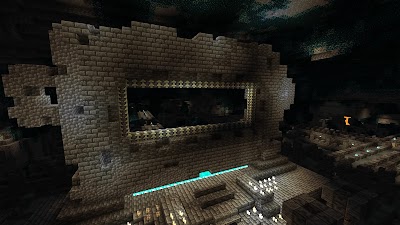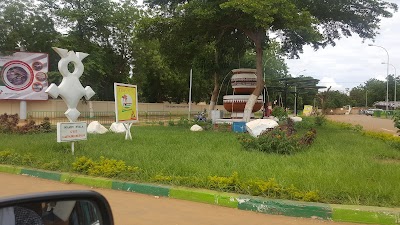Falaise de Bandiagara (فلايس باندياغارا)
Overview
Certainly! Here’s a revised version of your travel description, structured for clarity and engagement:
---
Nestled in the arid heart of the Taoudénit Region, Mali, the Falaise de Bandiagara, also known as the Bandiagara Escarpment, is a breathtaking landscape rich in history and culture waiting to be explored. This magnificent sandstone cliff stretches approximately 150 kilometers and rises up to 500 meters, serving as a significant landmark for understanding the rich heritage of the Dogon people who have inhabited this region for centuries.
Recognized as a UNESCO World Heritage site, the Falaise de Bandiagara reflects its cultural and historical importance. The Dogon settled in this area around the 15th century, although the cliffs have been inhabited since the Tellem period, dating back to the 11th century. The Tellem people are known for their unique architectural feats, including cave dwellings and granaries built into the cliff face. These ancient structures, still visible today, illustrate the early inhabitants' adaptability and ingenuity in carving out life in such a formidable environment.
Visiting the Falaise de Bandiagara offers a unique opportunity to immerse yourself in Dogon culture, which remains vibrant and influential in Mali. Renowned for their rich traditions, art, and mythology, the Dogon people's connection to the landscape is profound. The villages scattered along the escarpment are fascinating to explore, each offering unique insights into the Dogon way of life. For instance, the village of Sangha serves as a cultural hub, where you can witness traditional dances, ceremonies, and the intricate carvings and sculptures that the Dogon craft so expertly.
One of the most striking aspects of the Falaise de Bandiagara is the interplay between nature and human creativity. The villages are often constructed with organic materials that blend seamlessly with the natural surroundings, creating a harmonious balance between the built environment and the imposing cliff faces. Traditional Dogon architecture, characterized by flat-roofed houses, pointed-roof granaries, and Togu Na meeting houses, adds to the charm and mystique of the region.
For those seeking adventure, hiking along the escarpment is a fantastic way to experience this remarkable landscape. The trails offer stunning views of the surrounding plains and the intricate network of villages dotting the cliffside. As you navigate the rocky paths, you'll likely encounter friendly locals eager to share their stories and traditions. A knowledgeable guide can enhance your experience, providing detailed insights into the historical and cultural significance of various sites along the way.
The escarpment is also home to a variety of unique flora and fauna adapted to the region's arid conditions. Birdwatchers will find the area a paradise, with diverse species soaring above the cliffs or nesting in the rocky crevices. Exploring the escarpment at different times of the day reveals a stunning array of colors, from the golden hues of sunrise to the deep shadows cast by the setting sun.
The Falaise de Bandiagara is not just a destination for historical and cultural exploration; it is also a place for introspection and connection with nature. The sheer beauty and scale of the escarpment inspire awe and reverence, providing a perfect backdrop for contemplation and reflection.
While the region is relatively remote and travel infrastructure may not be as developed as in more touristic areas, the experience of visiting the Falaise de Bandiagara is truly rewarding for those seeking an authentic adventure. Accommodations vary from simple guesthouses in local villages to organized camping experiences, offering various options for immersing yourself in the local culture.
To ensure a respectful and positive experience, it is essential to be mindful of local customs and traditions. Engaging with the community responsibly, understanding and respecting Dogon culture, and supporting local businesses and guides can make your visit even more meaningful.
In conclusion, the Falaise de Bandiagara in Mali’s Taoudénit Region offers an unparalleled blend of natural splendor and cultural depth. It is a place where history is etched into every rock face and tradition flourishes in harmony with the surrounding landscape. For adventurous travelers willing to venture off the beaten path, the escarpment promises an unforgettable journey through time and an immersive experience in one of West Africa's most fascinating cultural landscapes.
---
This revised version maintains the essential information while enhancing readability and engagement through structured paragraphs and highlighted key topics.


